A visit to the North Island Wildlife Recovery Centre, Vancouver Island
On May 6th, following breakfast and an outing to Little Mountain with family, Cathy and made the short drive to the North Island Wildlife Recovery Centre (NIWRA) at Errington. I’ve taken a particular interest in since a friend started working there after moving from Dawson Creek. This is a lengthy post, with 41 photos and a short video.
When we pulled into the parking lot, the first thing I noticed was the great wraps on their vehicles. Those would be hard to miss on the road.
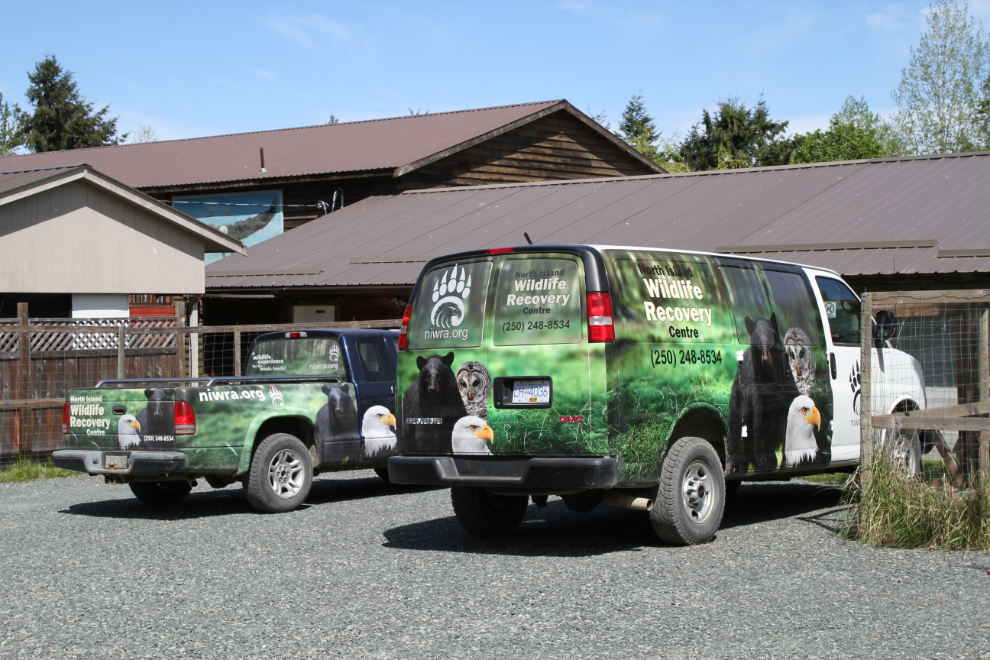
Although we went in through a back gate because of a culvert being replaced in the driveway, this is where visitors normally arrive at the facility. The sign in the middle says “Please take injured wildlife to the drop-off area.”
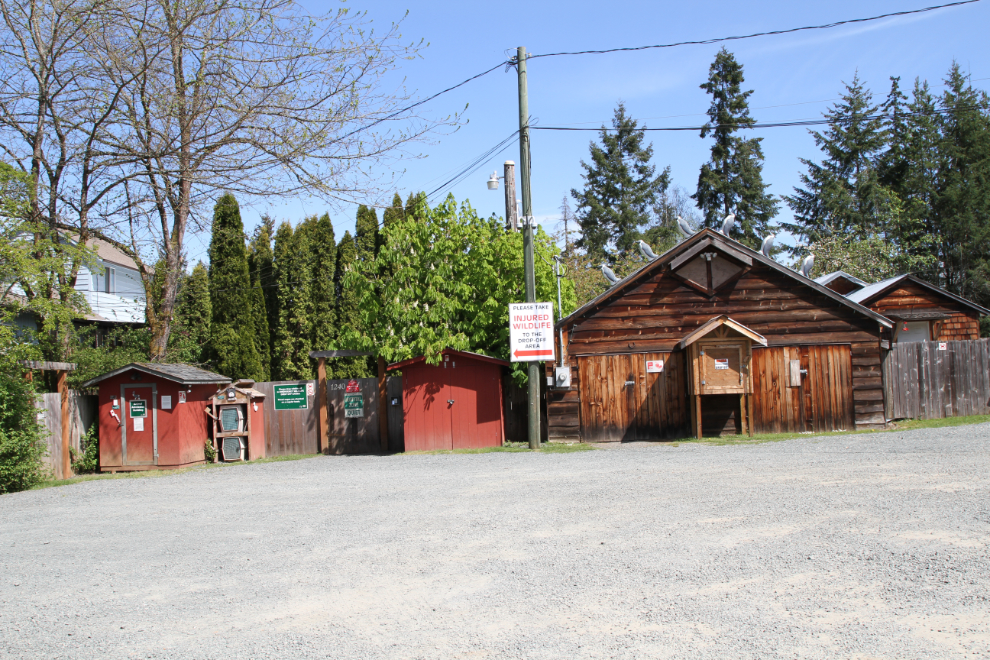
This is normally the entrance to the 8-acre property. Admission is $15 for adults, $6 for children 4-12, and little ones get to visit for free.
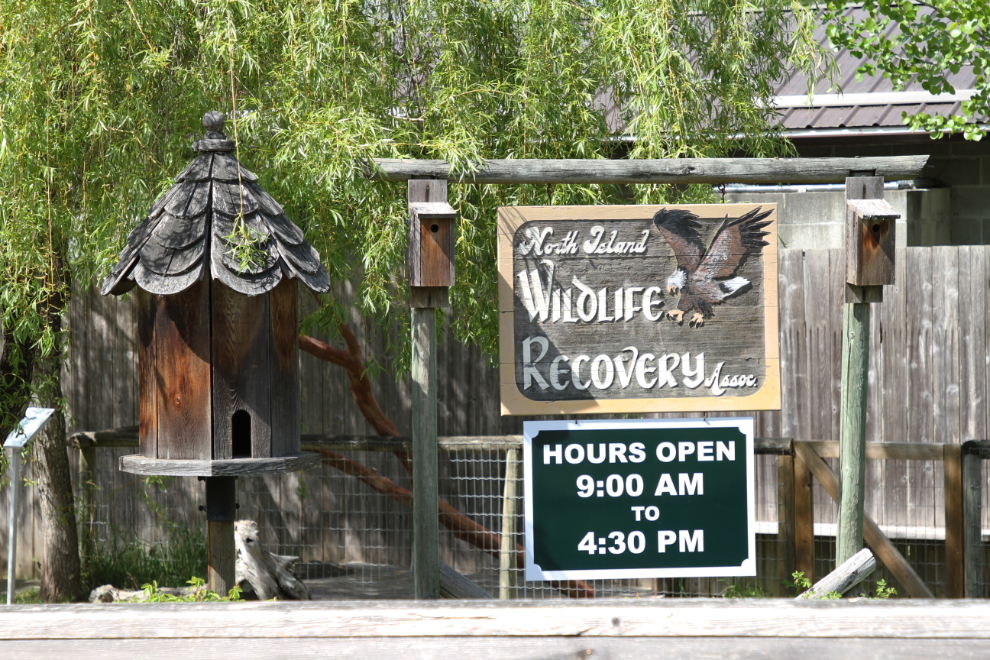
This photo is out of order, too, but a map of the property is a good way to start this photo-tour of it.
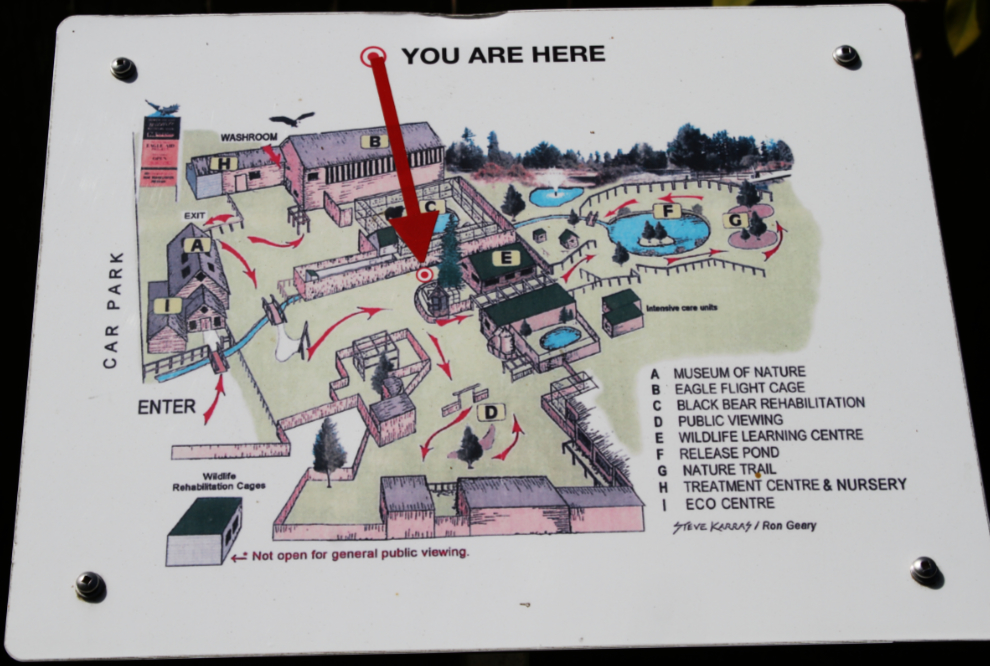
The birth of NIWRA goes back to Christmas Day, 1984, when Robin Campbell discovered a Great Horned Owl entangled in a neighbour’s fence, its wing mangled and in need of emergency care. Robin and his wife Sylvia cared for the owl, soon took on more injured birds and animals, and started the Buckley Bay Wildlife Recovery Centre. Two years later, they moved to the current property at Errington and changed the name to North Island Wildlife Recovery Association. After finding my friend Joyce Lee, who is now the Administrative Manager & Volunteer Coordinator, she took us to meet Robin, and we had a brief chat. He and Sylvia, who we met later during our visit, are both still very active in the centre’s operations 35 years after starting it.
We began our tour in the impressive Museum of Nature, the second-largest building on the property.
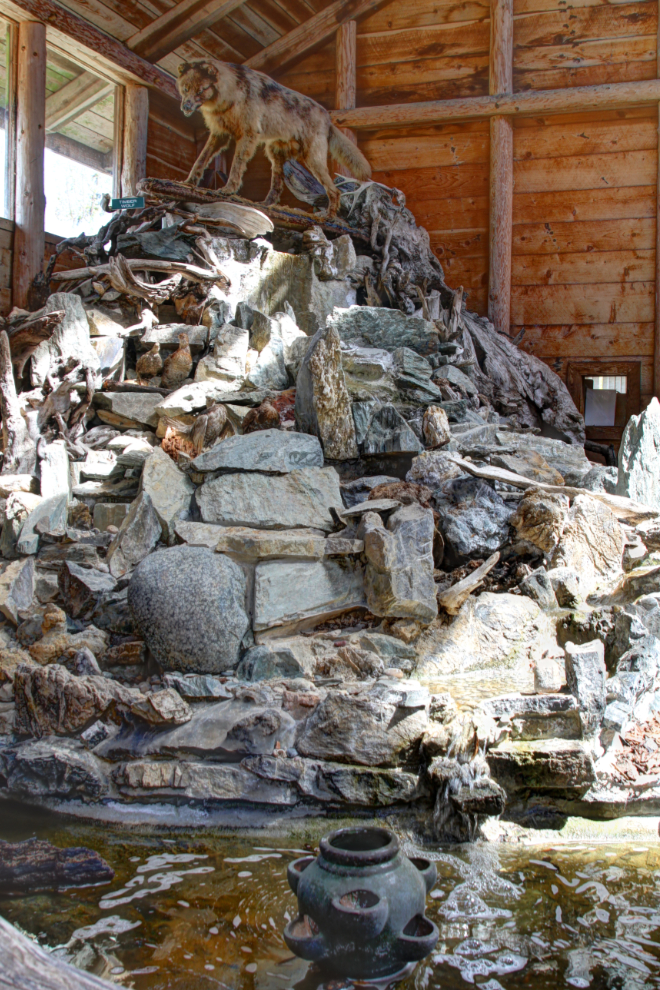
It was wonderful to see Joyce again. We first met in Dawson Creek when she was at the Visitor Centre there. My at-least-annual visits to explore and research for ExploreNorth and Destination BC got longer and longer, and when she and her husband moved to the Island to semi-retire, I didn’t know that I’d ever see her again. But once she started worked at NIRWA, seeing her passion for the place on Facebook, this visit was a must 🙂
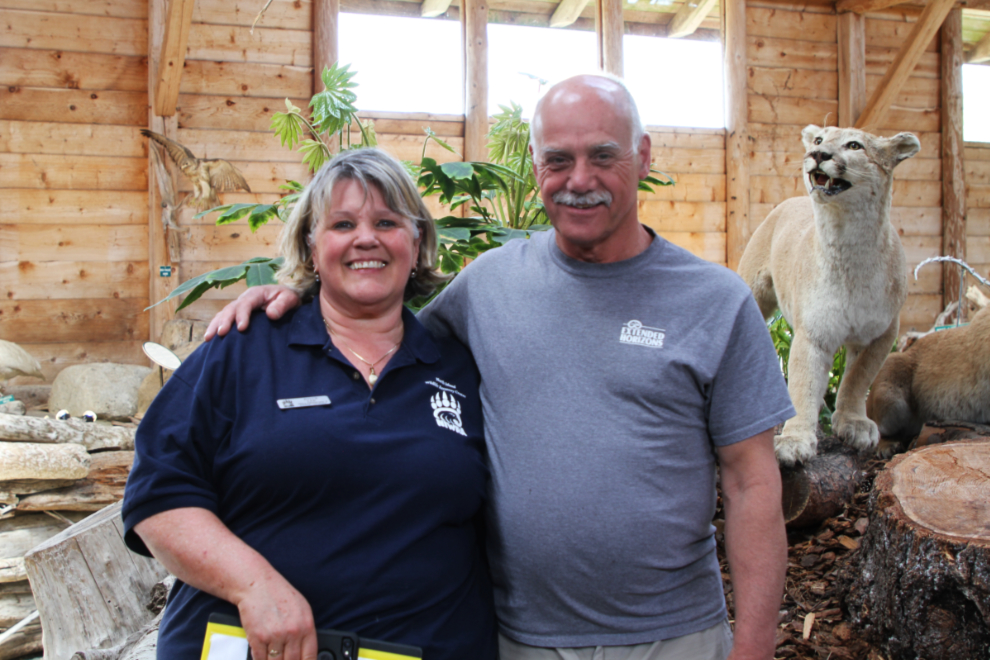
The quality of the taxidermy in the museum is quite exceptional.
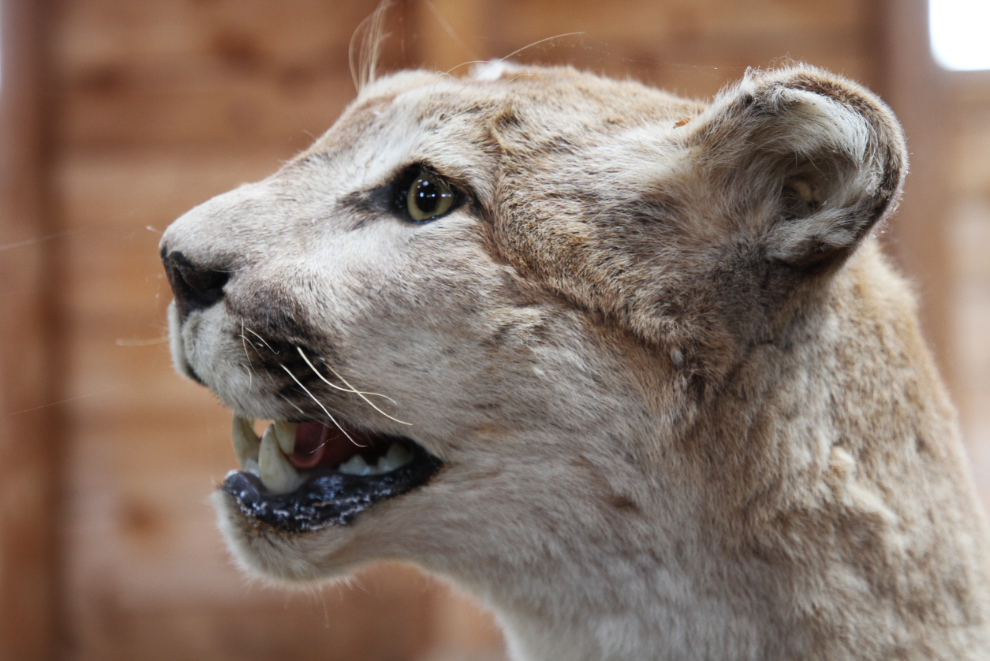
Having been involved in a few over the years, how non-profits get funding always interests me. I quickly learned that NIRWA is run largely by volunteers and gets no core funding from government. It fluctuates, but on average there are less than 10 paid staff members and almost 100 volunteers. Knowing that made what we would see and hear about during the tour even more impressive.
We watched Teresa, one of the volunteers, patiently glove-training an owl so it can take part in educational programs.
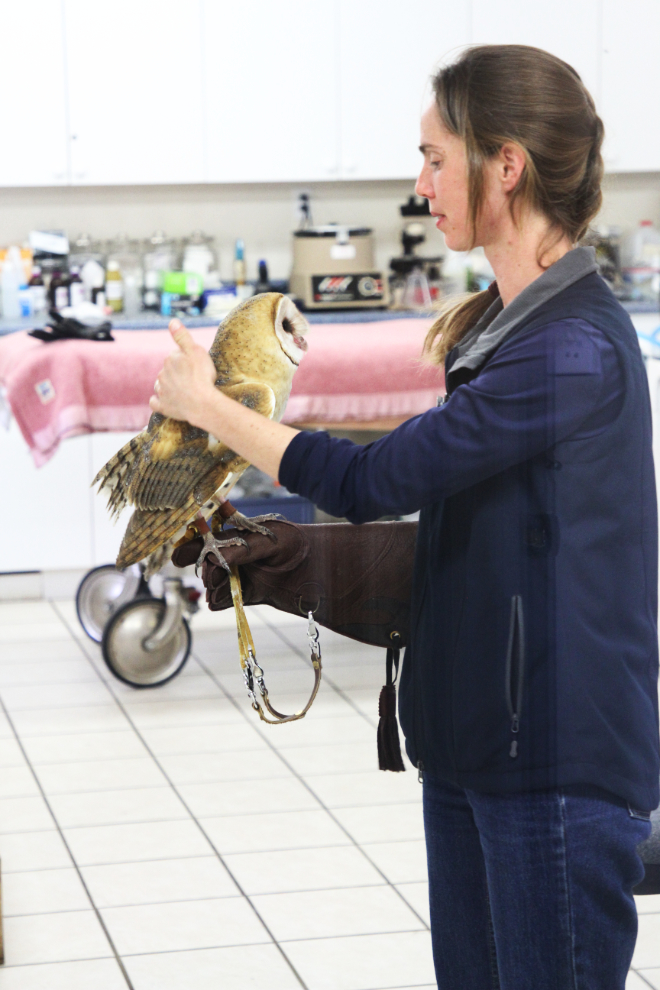
There is a very well-equipped veterinary hospital equipped to deal with most injuries. Vets are on call when needed.
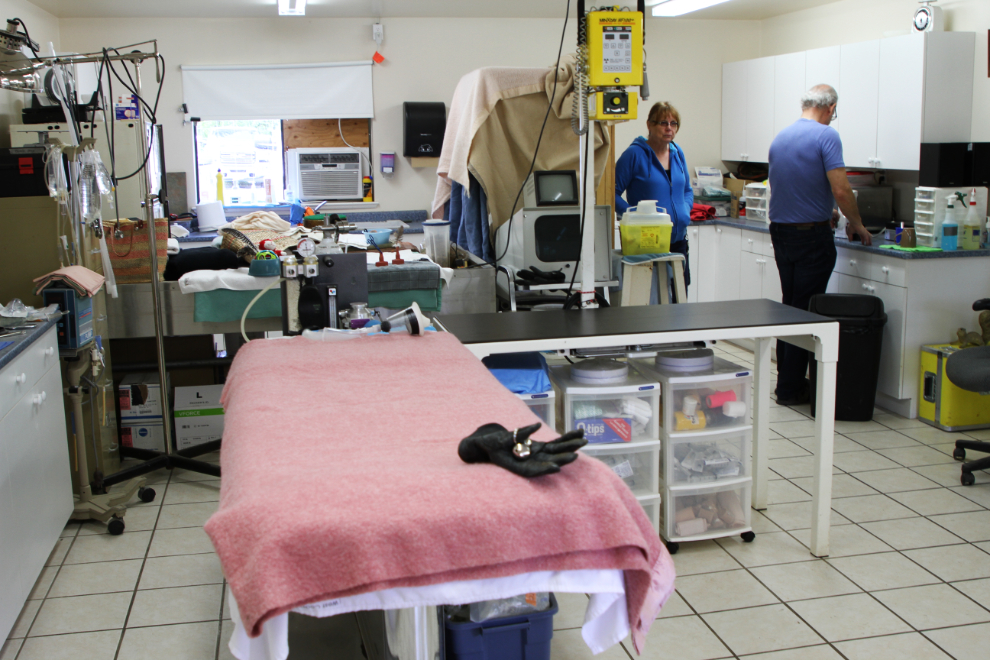
Their eagle flight cage (measuring 140′ x 30′ x 20′) is the largest of its kind in Canada. Allowing the birds to regain muscle strength after an injury (often from being hit by vehicles) is crucial to being able to release them back into the wild.
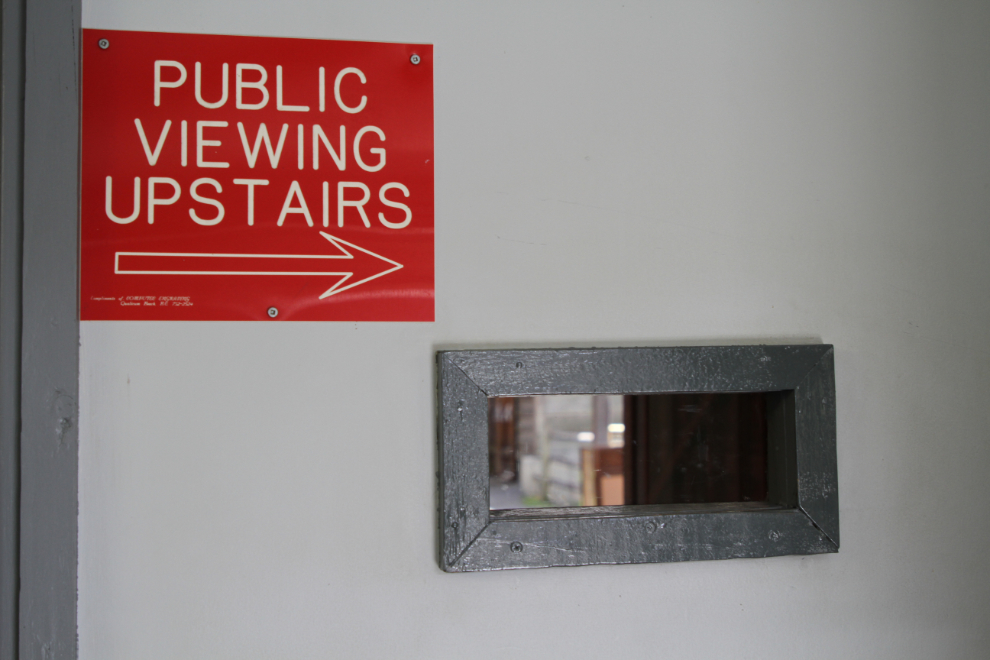
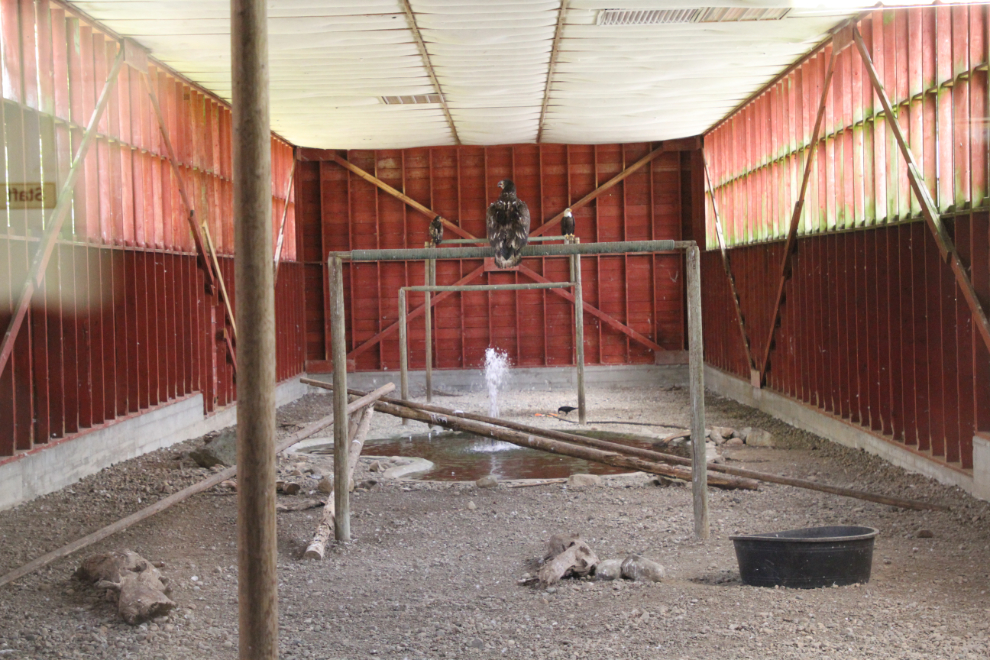
This poster of Robin and a bald eagle is on display in the upstairs viewing at the eagle flight cage.
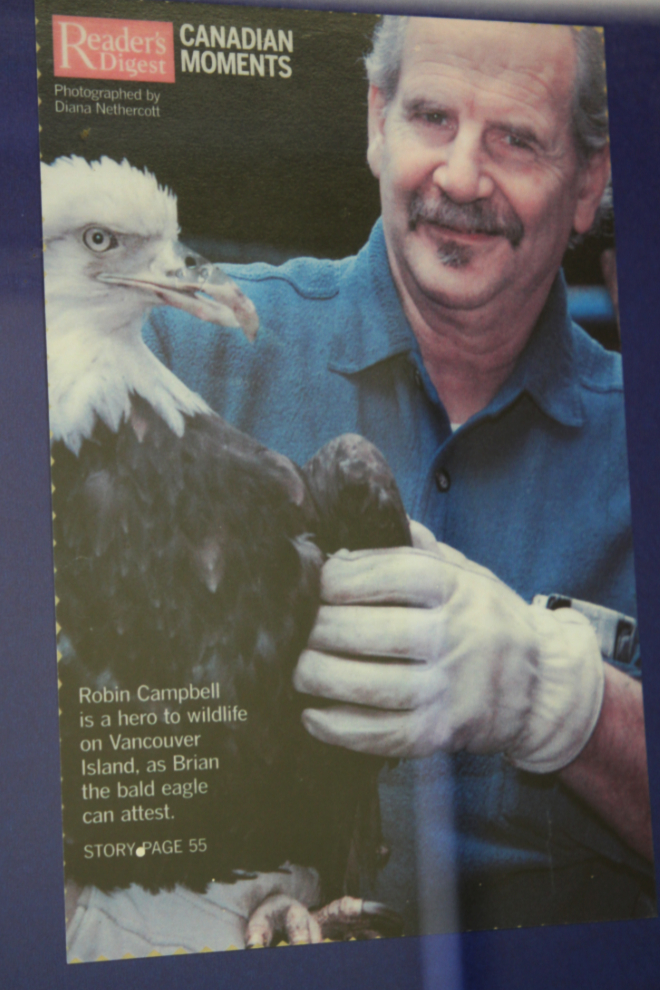
Also at the eagle flight cage is this bank of monitors looking at the various bear areas, some of which we’d see later.
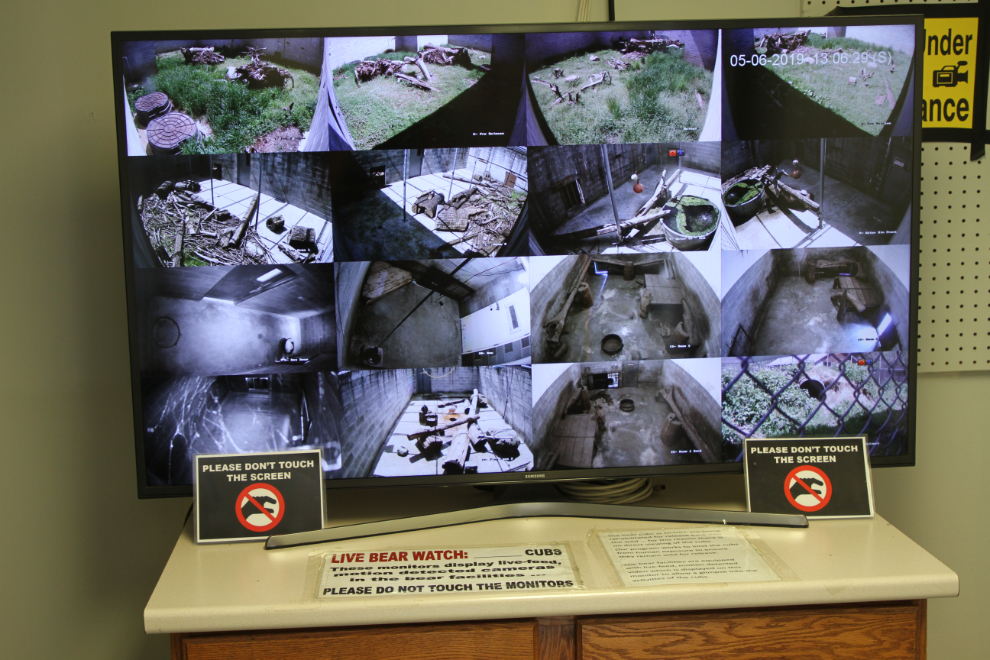
A recent arrival was this raven who was brought in and found to be blind. He certainly wouldn’t survive much longer in the wild, so he’ll be a permanent resident, and staff is experimenting with ways to keep him happy and healthy.
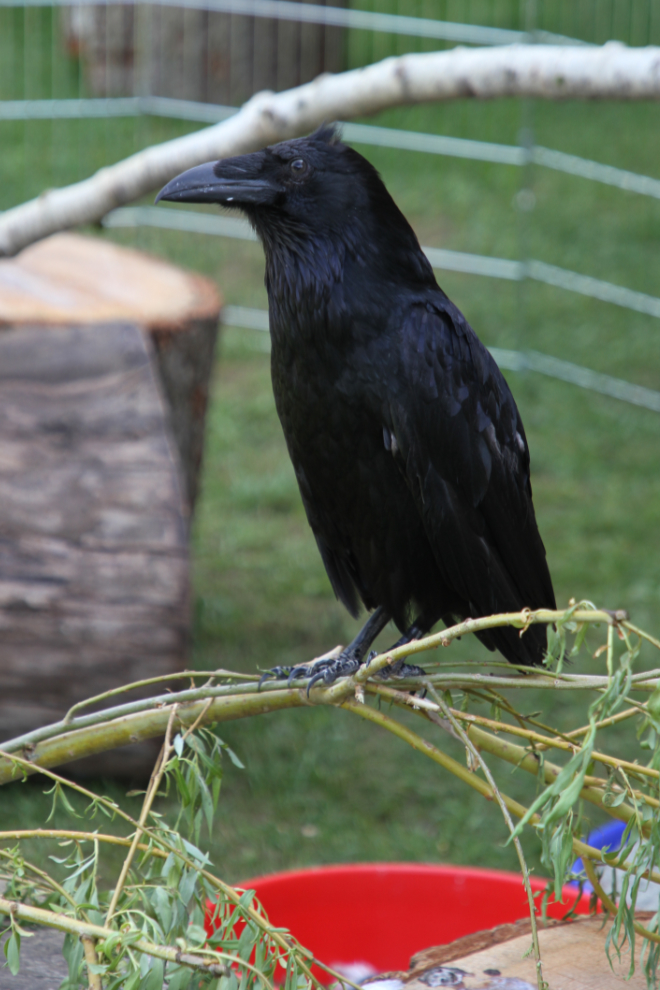
Some of the displays, like this Mounted Police cabin, were a surprise, but I’m sure are a wonderful way to keep younger visitors in particular engaged.
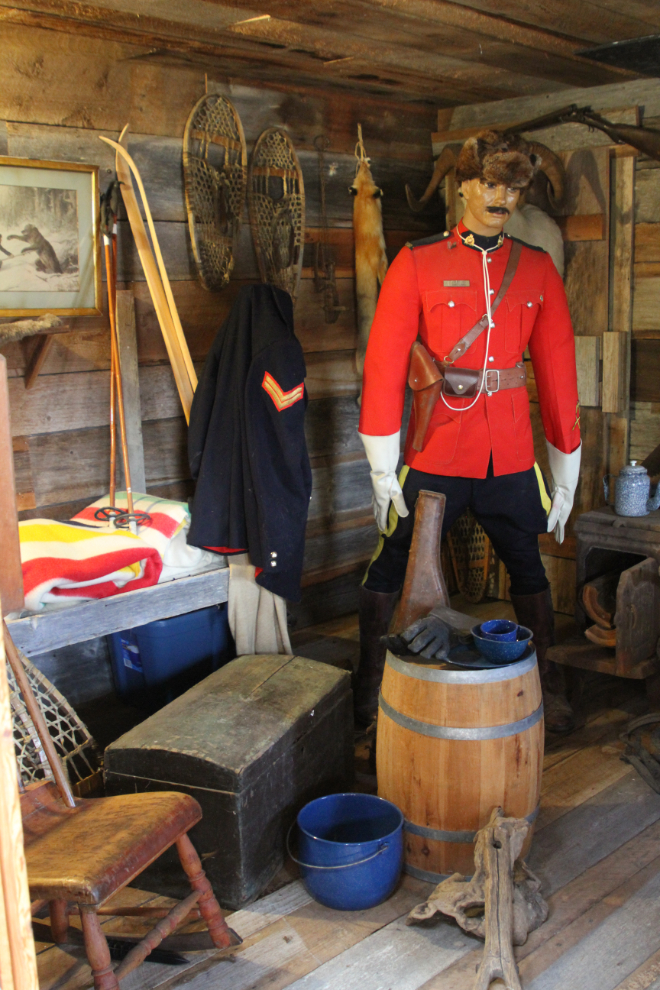
Joyce had to get back to work, and long-time volunteer Dave Erickson took over guiding us. Let’s go see some bears!
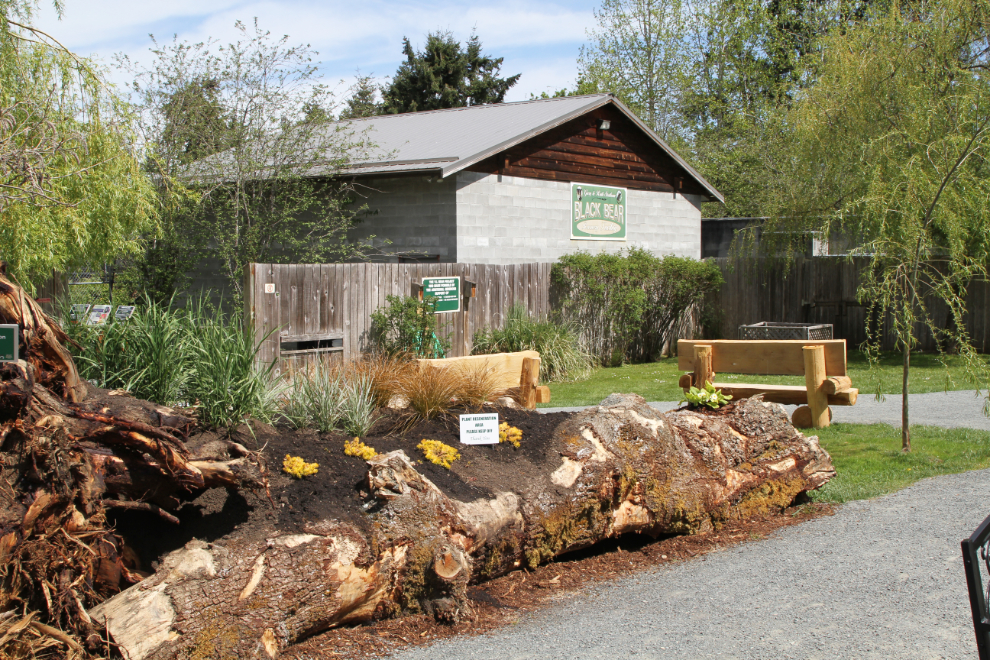
Bears require a great deal of special care and facilities, and it wasn’t until 1997 that NIRWA started accepting them. The center has now spent about $430,000 to construct a bear nursery, clinic, examining rooms, rehab area, play areas, a pre-release enclosure and a 120′ x 120′ enclosure with a cave, pond, and a feeding chute. Major funding for this project came from the late Arthur Knowles, the Donner Canadian Foundation and an anonymous donor. The bears seem to be a particular soft spot for Dave 🙂
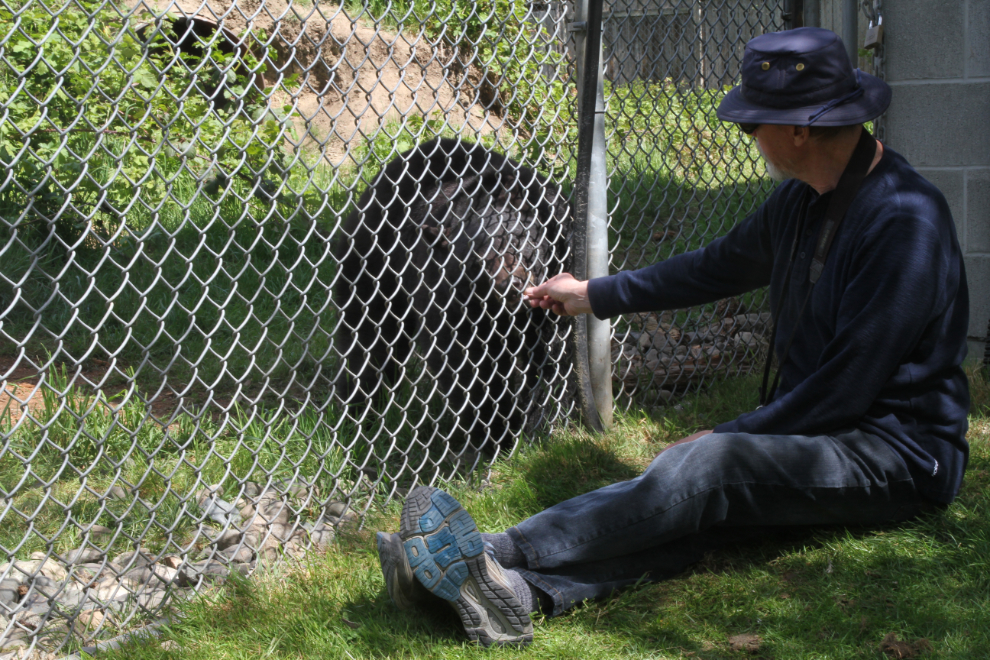
He wasn’t there, but Bill Helin is currently the Aboriginal Artist in Residence at NIWRA, working on carvings, paintings, and educational programs.
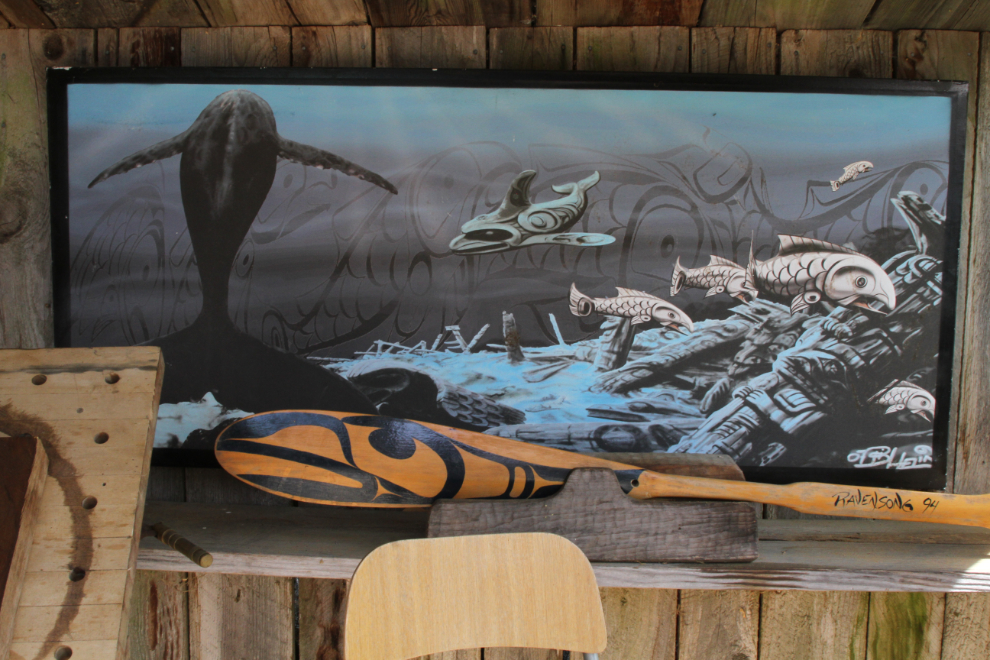
A snowy owl (Bubo scandiacus), a rather uncommon visitor to BC. Biologists aren’t sure why they come south from their normal Arctic home, but it happens on a 4-5-year cycle that may be linked to changes in the northern rodent population.
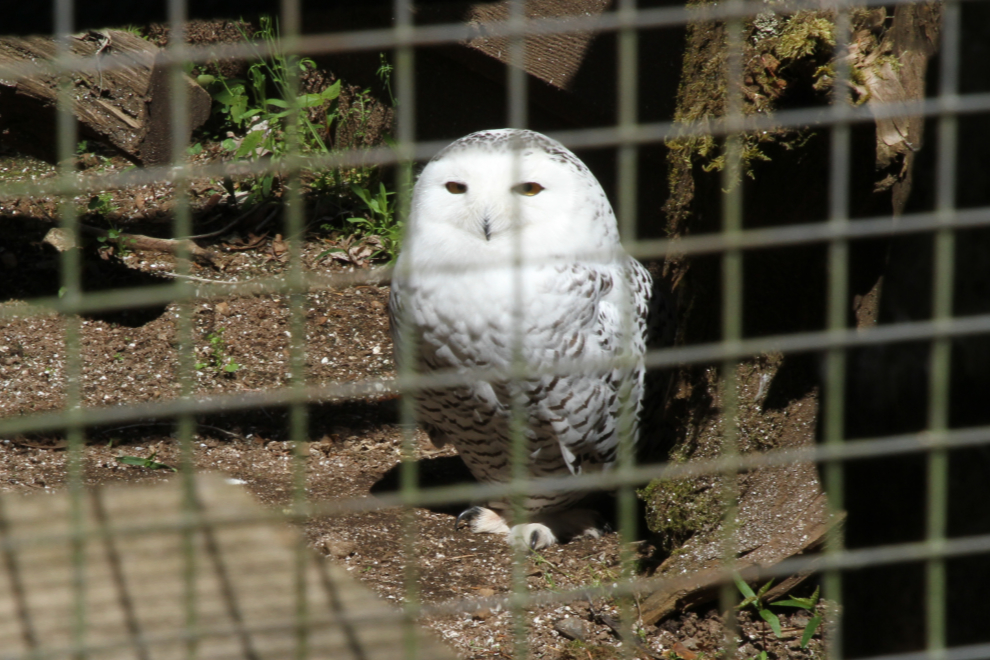
A gorgeous Swainson’s hawk (Buteo swainsoni) named Elvis. It was taken illegally from the wild as a chick and kept as a pet. When neighbours reported it, it was confiscated and brought to the centre. Because it never learned to hunt, it is a permanent resident. Sad stories like this are an important part of NIRWA’s educational programs and tours.
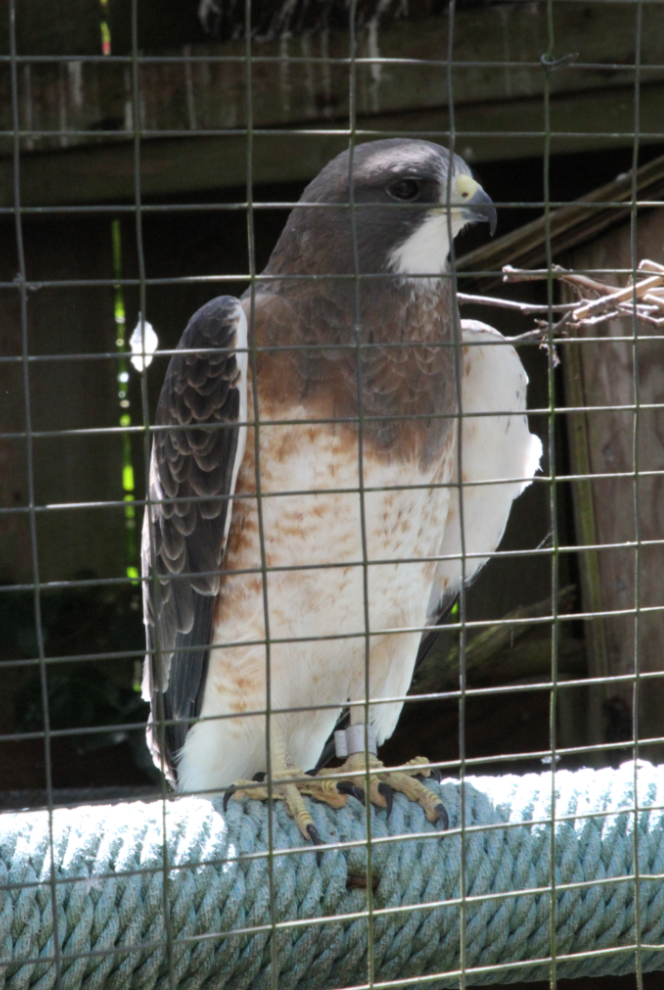
There are also displays about trash – showing the damage we’re doing to the ecosystems the animals live in.
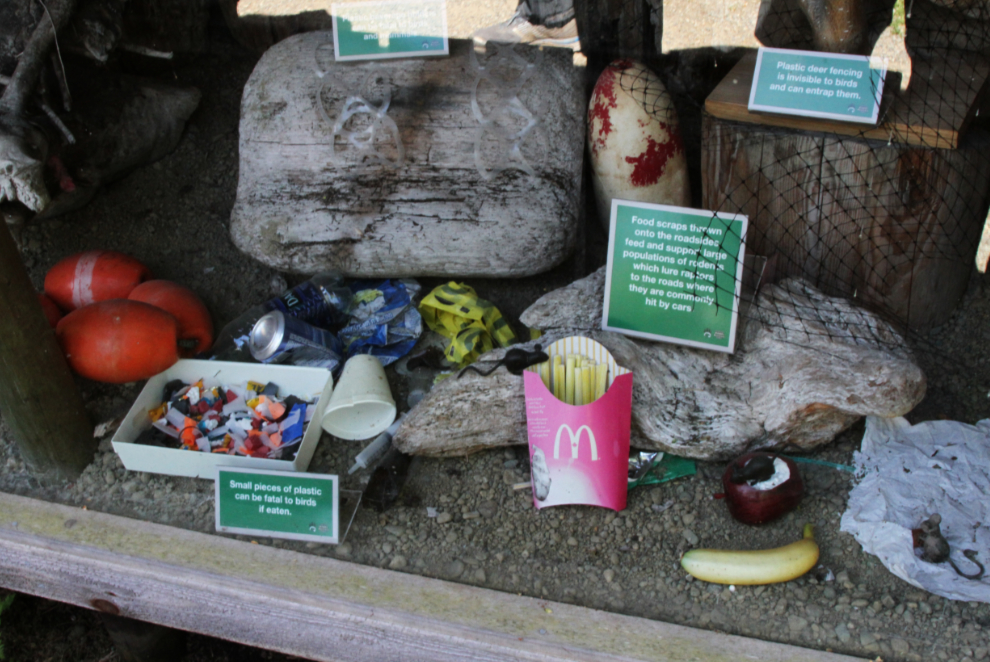
Ravens (Corvus corax) are one of my favourite birds – they are incredibly intelligent and can be real characters. The raven enclosure in the next photo is loaded with all manner of interesting things to keep the bird active.
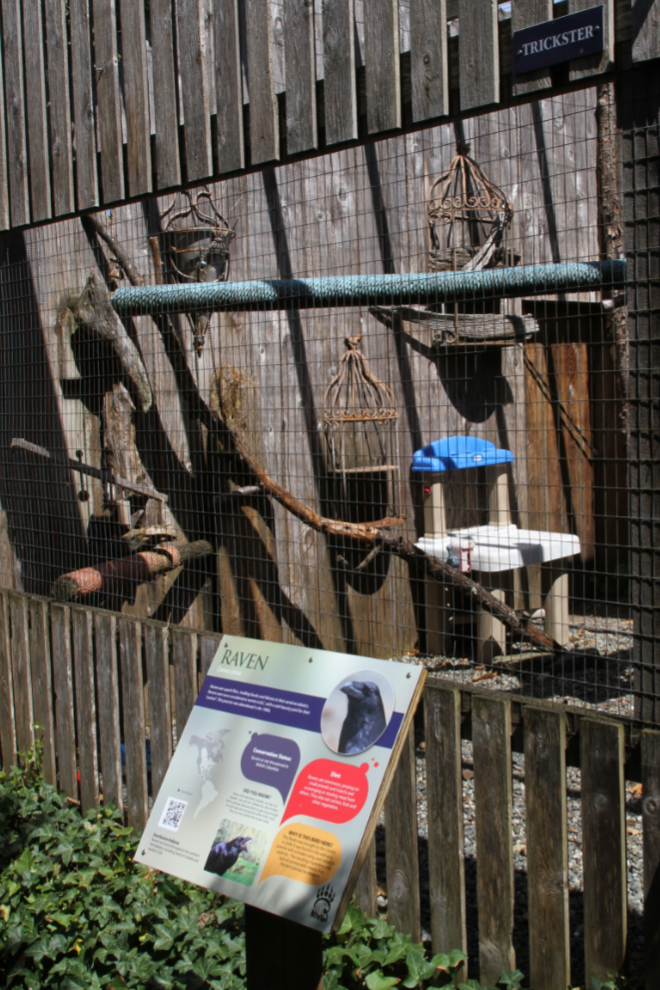
I think this is a great horned owl (Bubo virginianus).

We passed by the intensive care facility without comment – I don’t even want to know what goes on in there 🙁
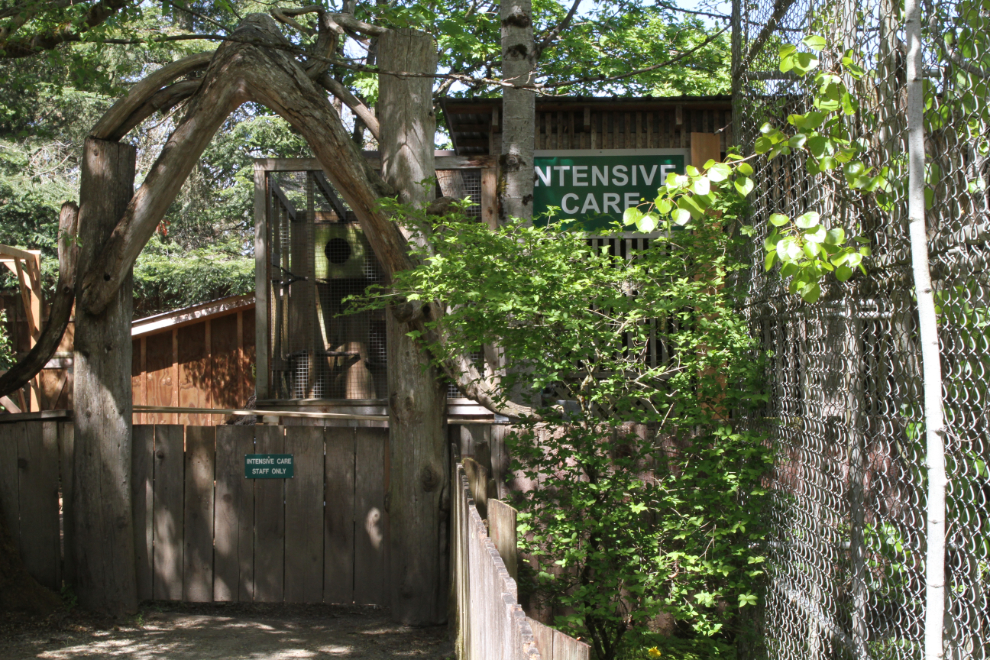
There were a few different types of ducks in this pen, brought here for a wide range of reasons.
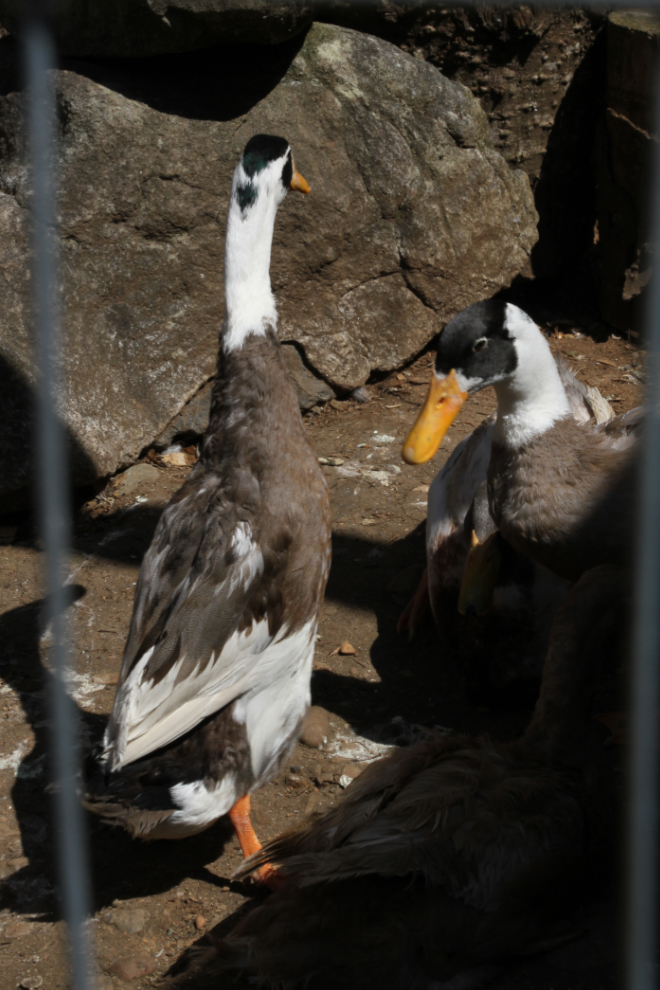
The further we got into the property, the more I was reminded of the Driving Creek Railway and Potteries in New Zealand. There, too, whimsical works of art are scattered all over the property. This 7-foot-tall turkey is wonderful! 🙂
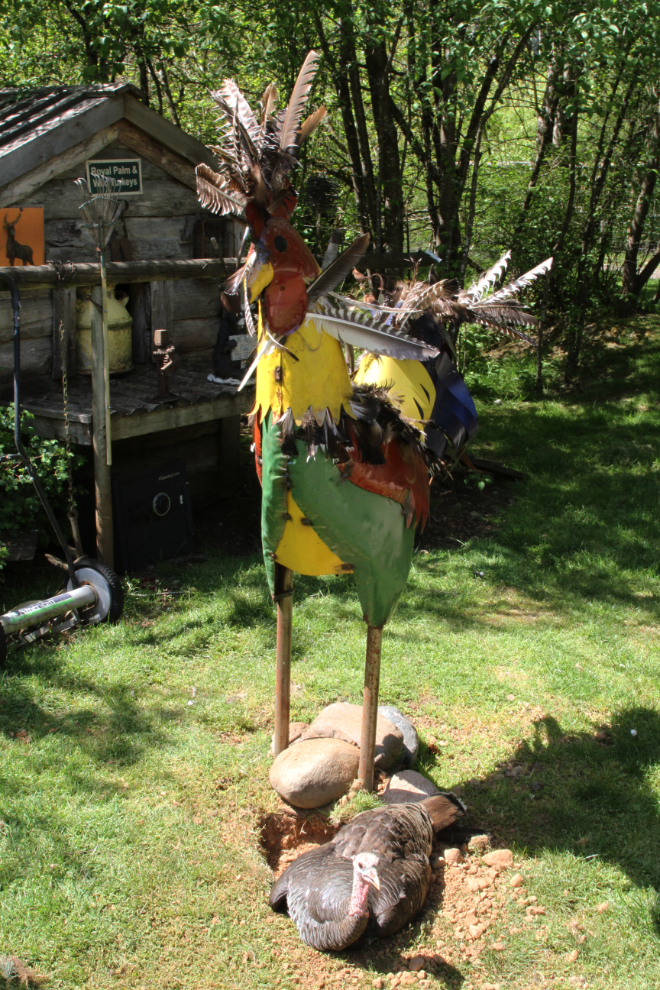
Easter Island moai? Sure, why not 🙂
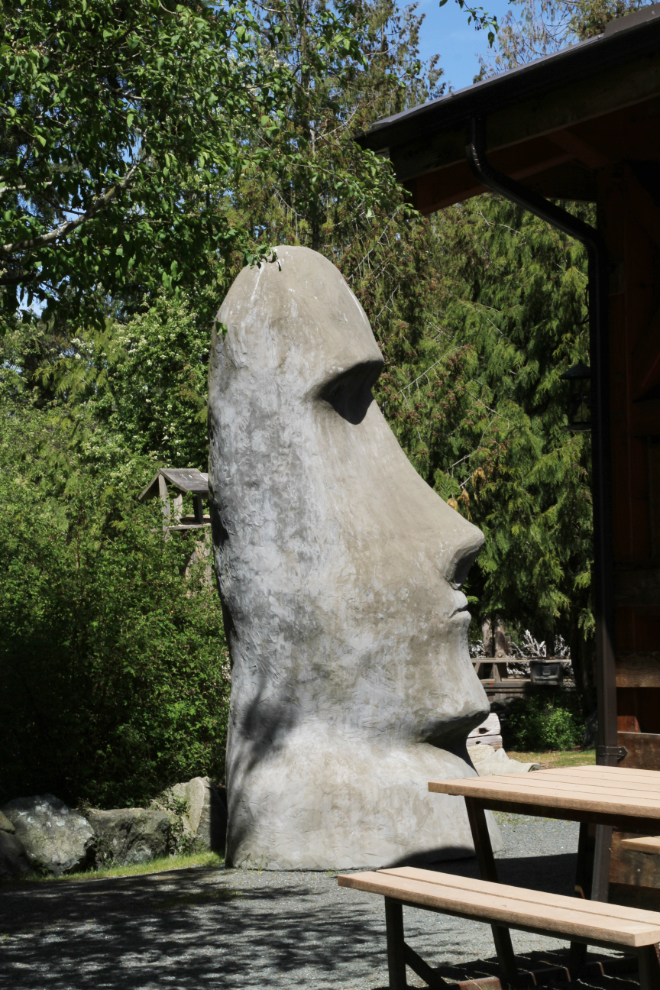
Andrew Cotton is the full-time maintenance guy and groundskeeper, and is doing wonderful work. The property is not only immaculate, there are some really unique landscaping features like this massive stump and root mass.
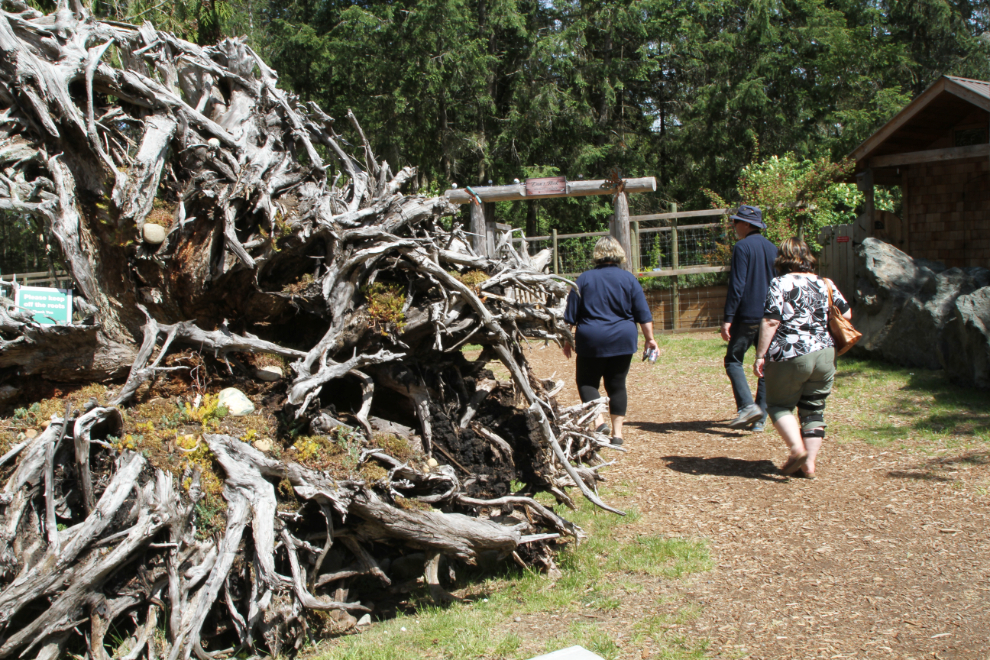
“Dan’s Nook” Wildlife Garden has a wide variety of plants designed to attract butterflies in particular.
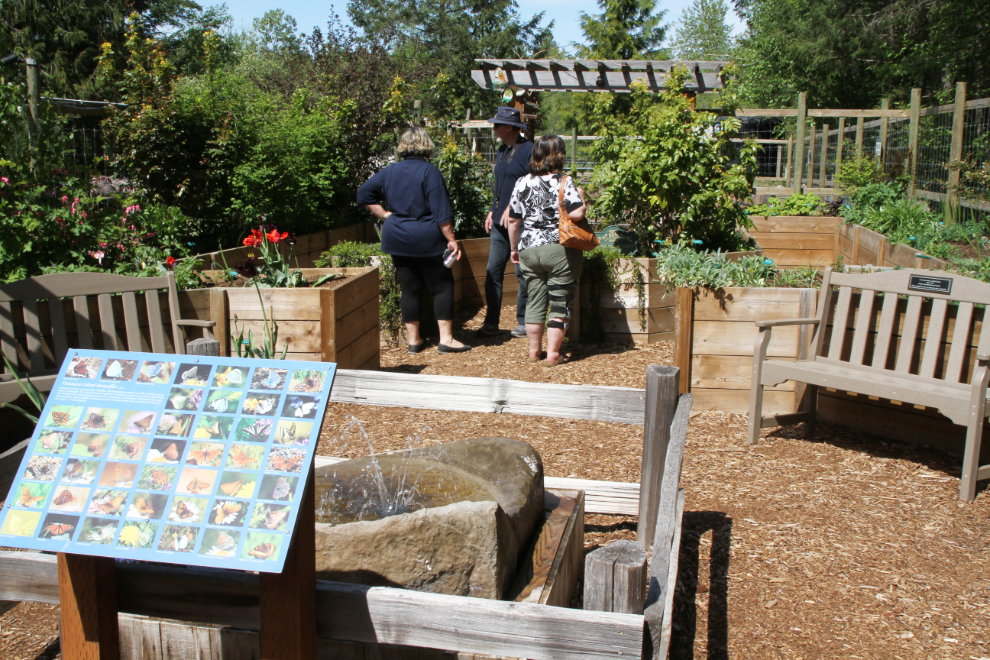
This part of the Wildlife Garden focusses on aquatic plants.
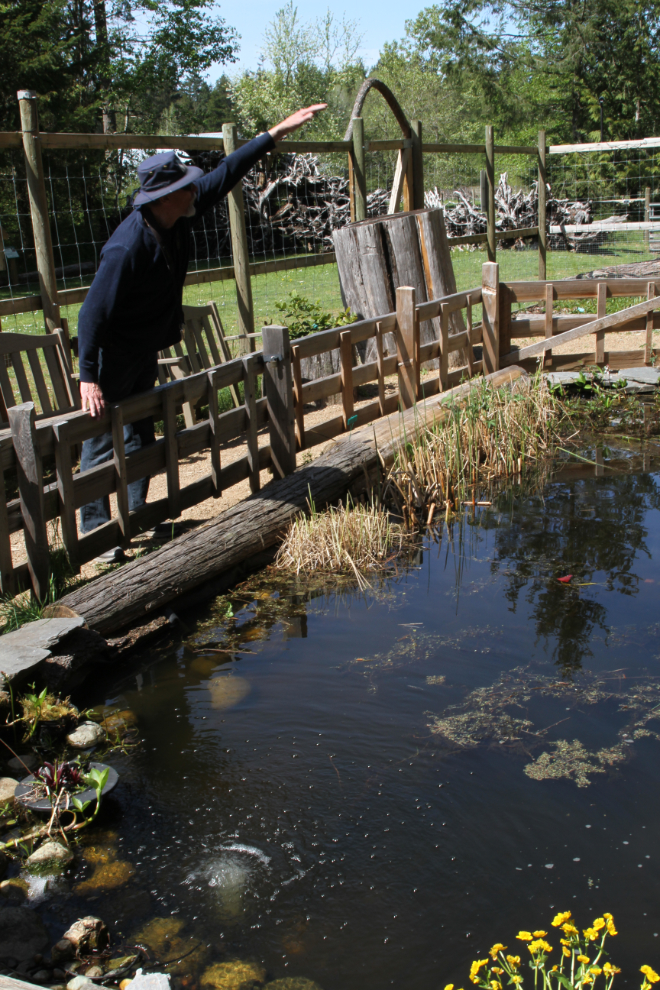
The next photo shows the main outdoor presentation area for educational programs.
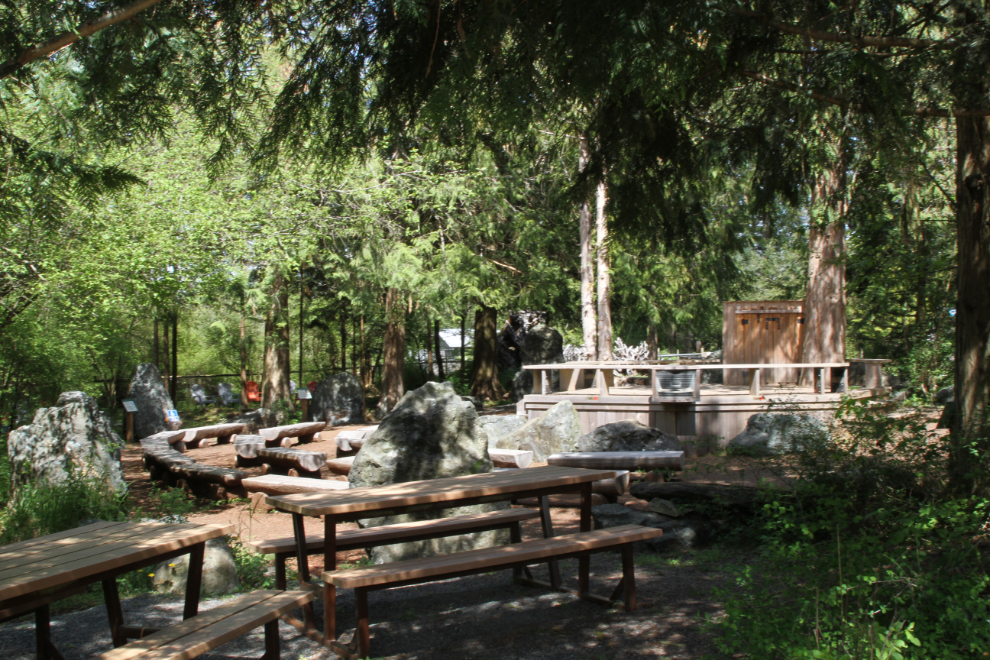
A large pond at the back of the property is home to turtles and ducks and whoever else happens by. Efforts are being made to stop large toads from happening by, as they eat some of the other residents.
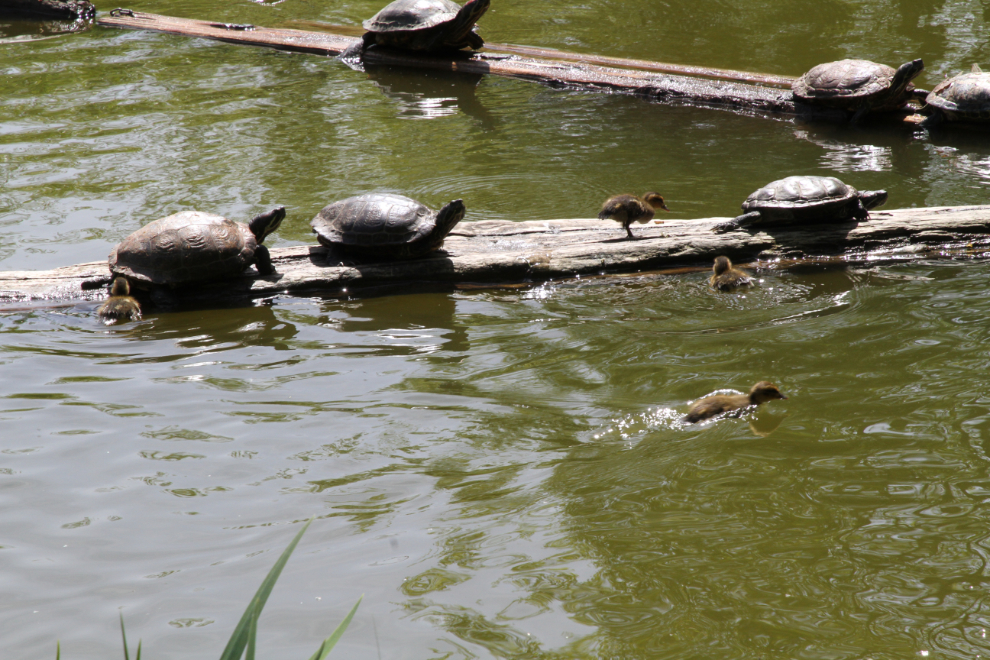
Here’s a broader look at the pond, with it’s benches, fountains, and artwork.
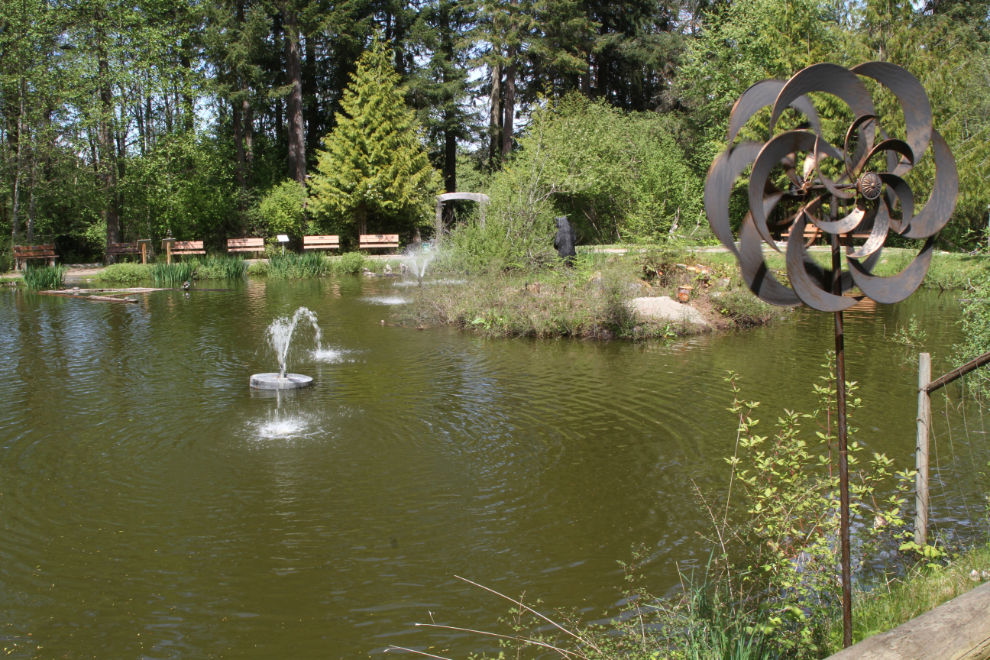
The beautiful 40-foot-long Ravensong Canoe, carved by Bill Helin in 1993, and a cedar log that he has begun to carve into another canoe. A 4-minute video on Youtube shows more of the Ravensong’s story, and her voyage to the 2010 Olympics in Vancouver.
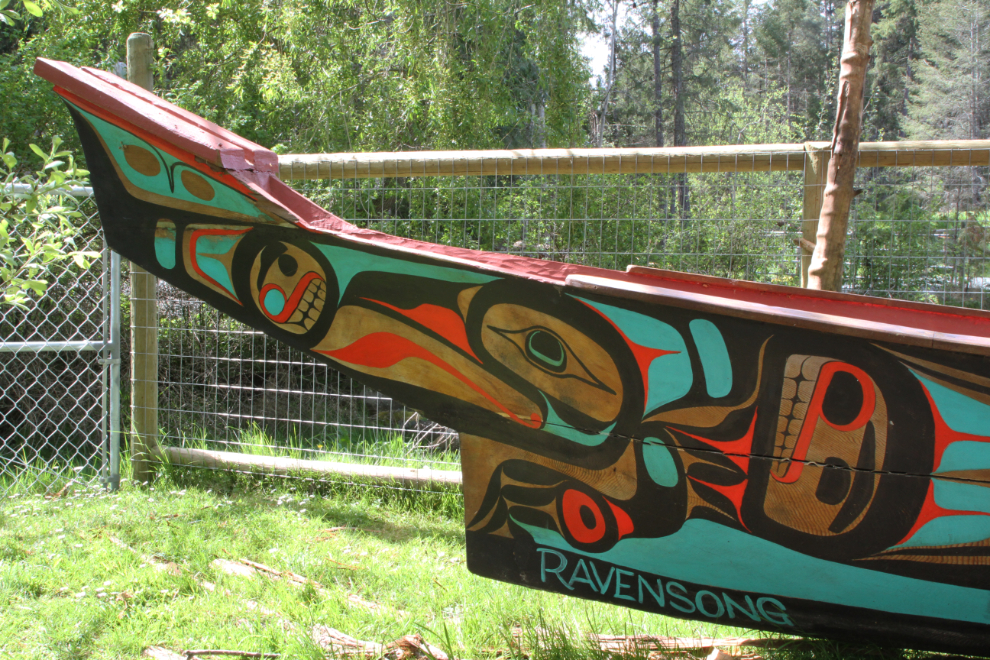
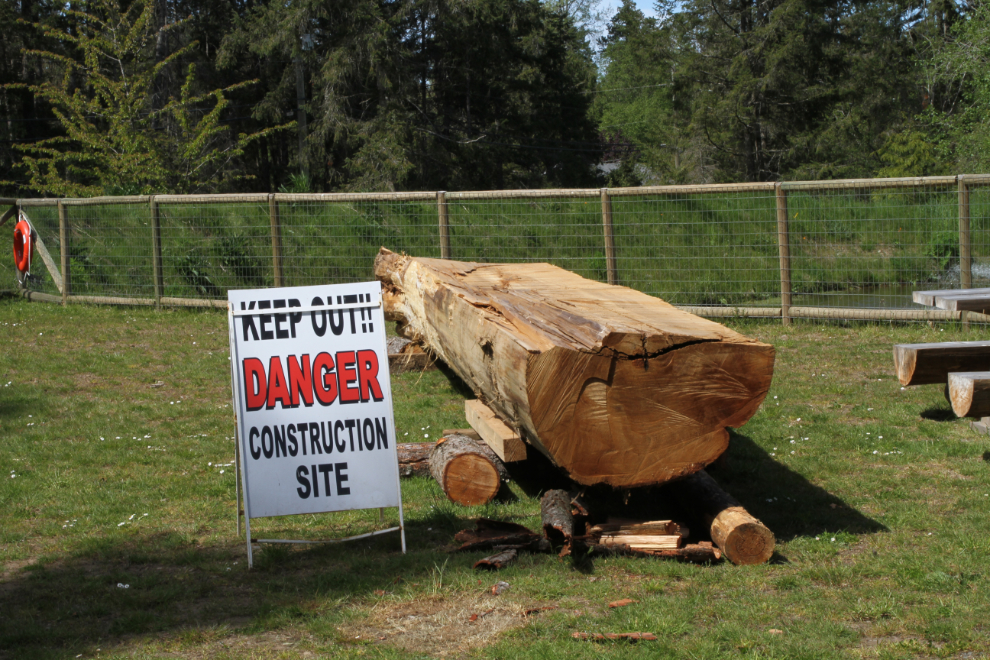
Even the power boxes are cool!
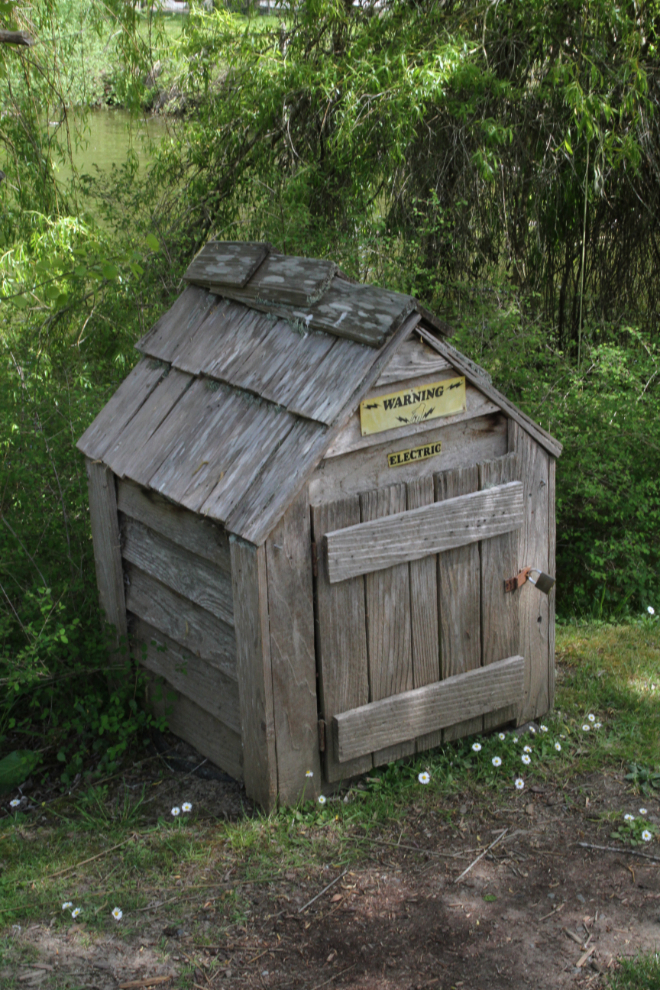
Back to the turkey pen. I could do a separate tour just on the art and the funky/unique structures and landscaping.
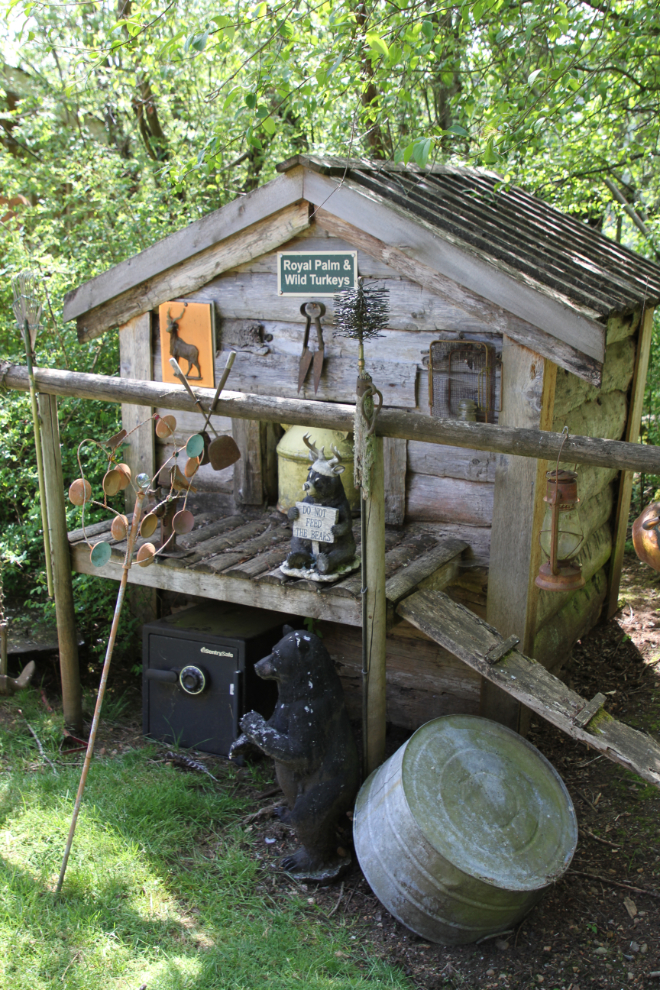
For days when it’s not sunny and warm as it was when Cathy and I visited, this building provides a comfortable place for the educational programs.

The final bird we visited was a bald eagle named Sandor, another permanent resident with a great home.
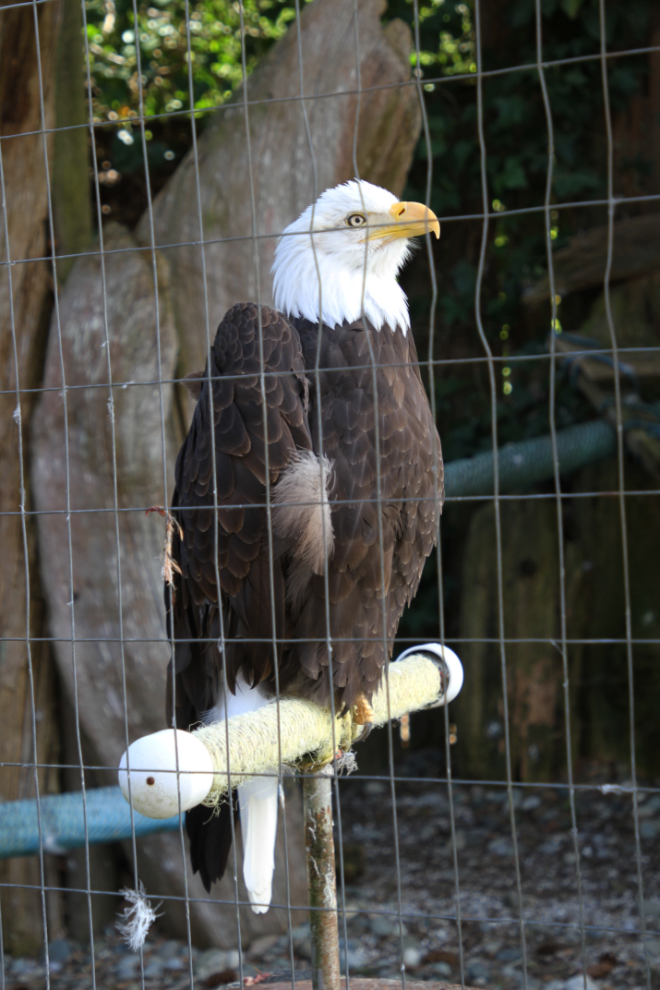
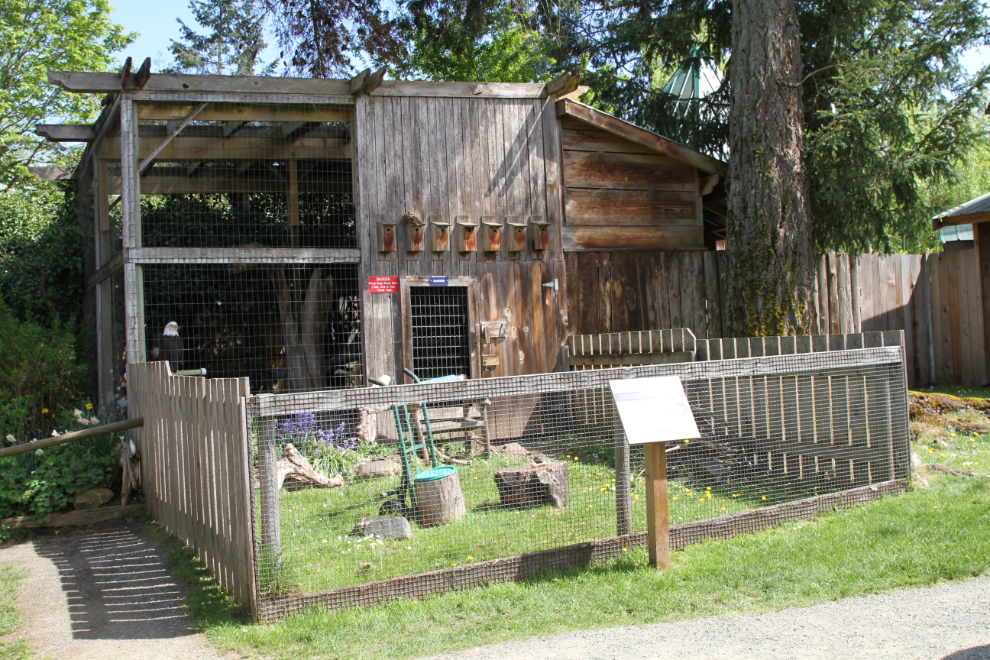
We spent over 2 hours at the centre. To say I’m impressed is an understatement. Before leaving, we adopted Sandor through their Care Shares program. No, he didn’t come home with us! This is a symbolic adoption to help with his care.
A week or so later, we got a certificate and other information about Sandor in the mail. It’s probably a good thing the North Island Wildlife Recovery Centre is so far away – I’d sure like to be a volunteer there! 🙂
